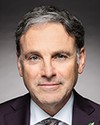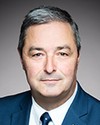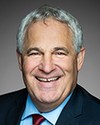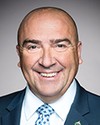Essentially, that represents the difference between the two systems.
In the rest of Canada, all services are virtually exclusively in English, and they are supposed to be offered in French only where numbers justify or there is significant demand. Often, when there is significant demand, there are insufficient services in French. Newcomers therefore have no choice: they join the English side. In fact, 99 per cent of language transfers are to English.
Quebec is the only francophone state in North America, the only place where newcomers can really be integrated in French, and that is what we see.
Now let's look at the interpretation of certain provisions when it comes to institutional bilingualism or the equality of the two languages, for a newcomer arriving in Quebec. If there is active offer in bilingual signage, they are given the message that they can choose English and that French is not necessarily the common language. Newcomers are not being sufficiently francized.
That is why it is important to include this factor and for it to be possible for federal services to be adapted in order to demonstrate that, ideally, French is the common language in Quebec and maybe, even, that it is predominant. Perfect symmetry does not allow for francizing newcomers and securing the future of French in Quebec.







